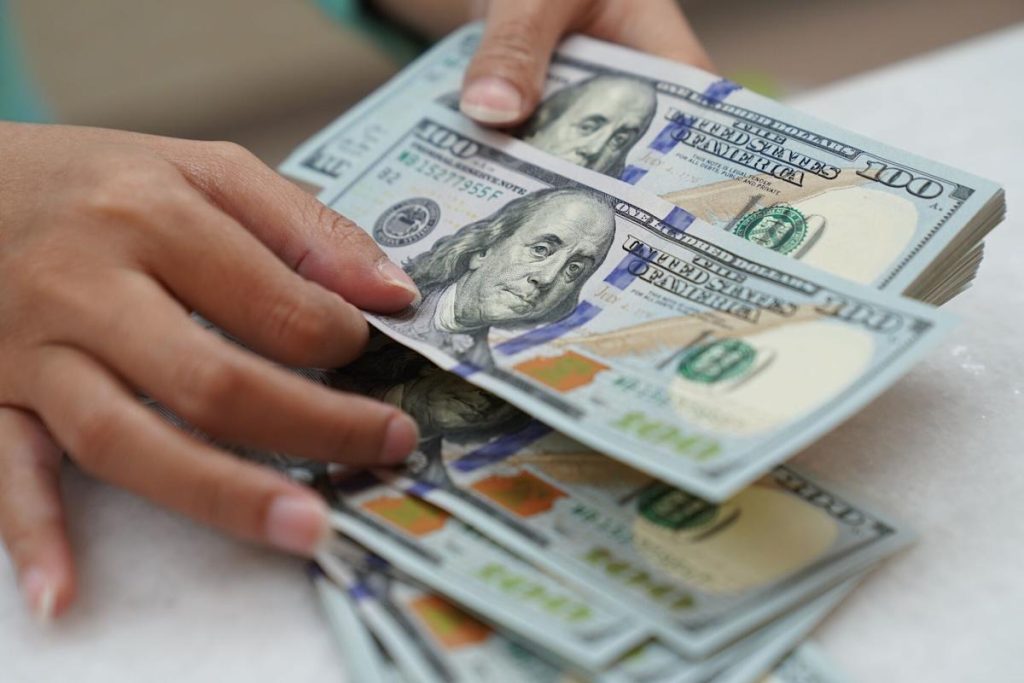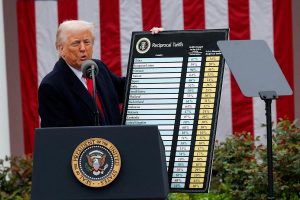
(Bloomberg) — The dollar has emerged as the latest victim of this week’s market turmoil as a worsening global trade war risks derailing US economic growth.
Most Read from Bloomberg
A Bloomberg gauge of the greenback tumbled to a fresh six-month low Friday after China raised tariffs on all US goods to 125%, effective April 12. The index kept its losses as US wholesale prices fell in March by the most since 2023, showing tame inflation ahead of higher tariffs. Options traders turned bearish for the first time in five years as part of a broader exodus from US assets.
Listen to the Here’s Why podcast on Apple, Spotify or anywhere you listen
Haven currencies such as the yen, Swiss franc and gold benefited from the outflows. The euro rose to its strongest level in three years, heading for its biggest two-day advance since 2009.
“The US’s growth advantage to the rest of the world has finally disappeared,” TD Securities strategists Jayati Bharadwaj and Mark McCormick wrote in a note to clients, adding that investors are increasingly moving toward European and Asian assets ex-China. “A combination of all this has turned dollar sentiment deeply negative in a short span of time.”
A group of speculative traders, including hedge fund and asset managers, switched to betting against the dollar and became most short on the dollar since October. They held some $4.3 billion via those bets in the week through April 8, data from the Commodity Futures Trading Commission showed.
Traders are not only losing confidence in the dollar’s long-term prospects — they’re doing so at the fastest pace on record. One-year risk reversals, a key gauge of demand for upside versus downside exposure against major peers, have flipped in favor of dollar downside for the first time in five years.
A Z-score analysis — which measures how far current pricing deviates from historical norms — shows that the speed and magnitude of the shift toward bearish dollar positioning is not only significant, but the most extreme on record. It underscores the scale of the sentiment reversal, suggesting traders are rapidly recalibrating long-held assumptions about the greenback’s role as a haven and store of value.
Friday’s price action rounded off yet another turbulent week for global markets as President Donald Trump’s fast-evolving trade policy leaves investors struggling to figure out their next move. The dollar recorded its biggest plunge in over two years on Thursday amid growing expectations that the Federal Reserve will have to lower borrowing costs to counter the contractionary impact of US tariffs.

